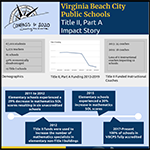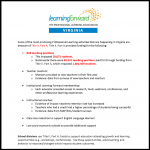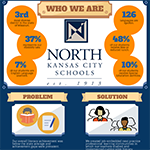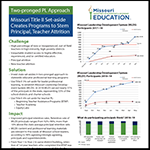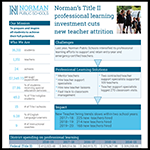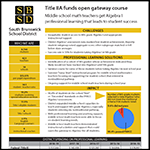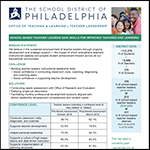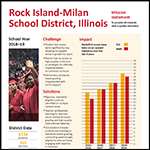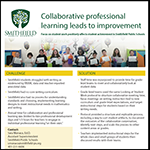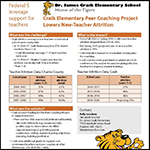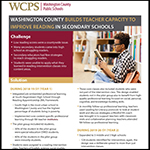Data Summaries
Get smart about data
 Educators collect data every day, including demographic data about teachers and students, the retention rates of teachers in a school system, the needs of the students they serve, and data tracking how well those students are progressing. There are many purposes for that data and forums through which to share it. Don’t be daunted — there are many kinds of evidence and data that can be useful beyond student test scores. Data awareness is key to recognizing what you have and how to use it.
Educators collect data every day, including demographic data about teachers and students, the retention rates of teachers in a school system, the needs of the students they serve, and data tracking how well those students are progressing. There are many purposes for that data and forums through which to share it. Don’t be daunted — there are many kinds of evidence and data that can be useful beyond student test scores. Data awareness is key to recognizing what you have and how to use it.
Deploy data strategically
 Knowing what to do with the data is as important as getting it. Tailor the data you collect and present to address the story you are telling. For example, if you are telling a story about professional learning initiatives to build the capacity of educators working with English learners, look for data that illustrate the need (e.g. where the gaps are in student learning) as well as data that show the progress made as a result of this targeted professional learning. It is important to take the time to collect the information and compile it in a format that is clear, succinct, and concise. Your story needs to provide enough information to grab the reader’s attention while also being in a format that is digestible and shareable.
Knowing what to do with the data is as important as getting it. Tailor the data you collect and present to address the story you are telling. For example, if you are telling a story about professional learning initiatives to build the capacity of educators working with English learners, look for data that illustrate the need (e.g. where the gaps are in student learning) as well as data that show the progress made as a result of this targeted professional learning. It is important to take the time to collect the information and compile it in a format that is clear, succinct, and concise. Your story needs to provide enough information to grab the reader’s attention while also being in a format that is digestible and shareable.
Tell your story with data

We created this tool (Please download to use the template) to make it easier for you to compile and present the data that tells your story. Once you fill out the template, you can use it internally to construct and practice the story you will share with policymakers to demonstrate the importance of professional learning. You can even print it and hand it out so they will have a tangible reminder after you leave.
First, fill in the data about the district you represent. This is important context for your story. You should be able to find this data in district and school records.
Second, fill in the three key parts of your story that policymakers need to hear, using the data sources available to you:
- Challenge: What is the problem or need in your school, district, or state that you seek to address?
- Solution: What have you already done to address this need?
- Impact: Most importantly, what was the result of these actions?
Keep words brief and make numbers prominent so they are easy to see at a glance. Make sure to include your contact information so policy aides can be in touch with you about next steps.
Learning Forward Advocacy
Powered by Title II
Communities & members
Resources
Examples from your colleagues
Below are several examples of data summaries created by fellow Learning Forward stakeholders. We would love to add your summary to this list!

